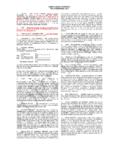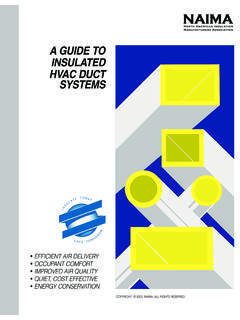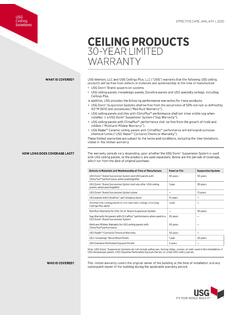Transcription of Integrated Pest Management: Conducting Urban Rodent …
1 Integrated Pest Management: Conducting Urban Rodent SurveysiSuggested citation: Centers for Disease Control and Prevention. Integrated pest management: Conducting Urban Rodent surveys. Atlanta: US Department of Health and Human Services; 2006. Use of trade names is for identification only and does not imply endorsement by the Centers for Disease Control and Prevention, the Public Health Service, or the Department of Health and Human Services. Contents IPM Basics ..1 Definition and Program Characteristics of Urban Rodent Basic Units in the Operational Program ..3 Sample Versus Comprehensive Personnel Requirements.
2 4 Survey Procedures ..5 Sample Survey Survey Crews and Equipment ..6 Premises Inspection Exterior ..7 Premises Inspection Instructions for Completing the Block Record (Exterior Inspection) Premises Premises Type ..9 Premises Details ..9 Food ..10 Entry and Active Signs ..14 interior Inspection Using a Modified Block Record (Exterior Inspection) Form ..14 Premises Type ..15 Premises Details ..15 Food ..15 Water ..15 Harborage ..15 Entry and Access ..15 Active Signs ..15 Remarks ..15 GIS and Mapping ..16 interior Tolerance Selected Appendix A Survey Integrated Pest Management: Conducting Urban Rodent Surveys i Integrated Pest Management: Conducting Urban Rodent Surveys ii This manual is for classroom use and for field training of program managers, environmental health practitioners, inspectors, outreach workers, and others who work in community-based Rodent Integrated pest management programs.
3 The manual is also a reference for survey techniques and for the preparation of reports and maps. Introduction For centuries, people have recognized that rats and mice are not only a nuisance but are a public health problem. Rats and mice damage and contaminate food, damage structures, and carry diseases that threaten health and quality of life, and they can cause injury and death. This manual describes techniques to help us protect ourselves from these disease vectors by gathering information (surveillance) about infestations and about the causative conditions of infestation. Accurate recordkeeping by public health officials provides the information needed to manage Rodent and other pest problems.
4 Urban Rodent surveys of exterior areas are the primary means for obtaining information on Rodent infestations and on premises with environmental health deficiencies that support commensal Rodent populations in housing and on premisess. Survey areas should include residential, commercial, and civic buildings; vacant lots; and public areas. The Rodent species primarily targeted in surveys are the Norway rat (Rattus norvegicus), roof rat (Rattus rattus), and house mouse (Mus musculus). Urban Rodent surveys, as well as surveys for other pests, fulfill an essential surveillance requirement for every Integrated pest management (IPM) program, which is the need for detailed information about conditions in a defined community.
5 IPM is a long-term, effective, and holistic approach to managing pests of all kinds by carefully combining various interventions ( , education, code enforcement, Rodent proofing, poisoning) in ways that minimize environmental hazards and deficiencies that affect people s health. The focus of this manual is on how to conduct a survey, although the other IPM components are covered briefly to establish their link to the survey. This manual is for classroom use and for the field training of program managers, environmental health practitioners, outreach workers, inspectors, and others who work in community-based Rodent IPM programs. This manual is also a reference on survey techniques and on the preparation of reports and maps.
6 IPM Basics Definition and Philosophy IPM requires a shift from the typical pest control efforts that often emphasize poisoning and trapping. With IPM, pests and disease vectors are managed by managing the environment. For IPM to succeed, the behavior and ecology of the target pest, the environment in which the pest is active, and the periodic changes that occur in the environment (including the people who share the environment) must be taken into account. In addition, the safety of the people, the environment, and the nontarget animals such as pets, birds, and livestock must be considered. IPM is a decision-making process in which all interventions are focused on a pest problem and on the goal of providing the safest and most effective, economical, and sustained remedy.
7 IPM is a comprehensive systems approach. IPM is based on and should adhere to the sound biologic principles of population dynamics the study of birth rates, mortality rates, and movement rates. An understanding of population dynamics is important because any successful strategy for the management of Rodent populations depends on that understanding and on Conducting appropriate interventions based on IPM principles. A 1976 CDC publication on Urban rat control states that political mechanisms must be able to administer the control procedures that are dictated by the principles [of population dynamics]..A corollary of the strategy of working with principles is that research should not continue in clear violation of population principles in expectation that a politically acceptable solution will be found.
8 Program and political support are essential in obtaining the necessary resources for an IPM program that takes into account the complex interplay of rodents, people, and environmental factors. The overall goals of IPM are to reduce or eliminate human encounters with pests and disease vectors and to reduce pesticide exposure. Integrated Pest Management: Conducting Urban Rodent Surveys 1 Program Components The four key components of an IPM program are survey, tolerance limit, intervention, and evaluation. If a key component is omitted, success in managing or eliminating pests is reduced. Surveys (inspection and monitoring): A measure of the magnitude of the pest problem and its environmental causes.
9 Survey results determine the need for a Rodent IPM program and the direction the program must take to manage the Rodent problem. An Urban Rodent survey has four distinct phases: 1. premises inspection (comprehensive or sample) of defined areas ( , groups of blocks) to record infestations and their causative conditions; 2. preparation of maps, graphs, and tables to summarize survey results (may include photographs of field observations); 3. preparation of a report that includes an analysis of block and premises data, and premises prevalence rates for infestation and its causative conditions; and 4. recommendations to resolve the Rodent infestation problem.
10 Surveys are especially useful in the development of educational interventions directed to the public ( , Web sites, television and radio programs, videos, newspaper articles, brochures, posters, exhibits). Tolerance limit (action threshold): The level at which a pest causes sufficient damage to warrant public health attention and intervention. Real or perceived damage can be aesthetic and can have economic, psychologic, and medical consequences. In 1972, CDC established tolerance limits for Rodent infestation, exposed garbage, and improperly stored refuse. Details of these and other survey-based criteria are discussed later in this manual. The survey establishes the baseline on Rodent infestation and on the causative conditions that support the infestation.















